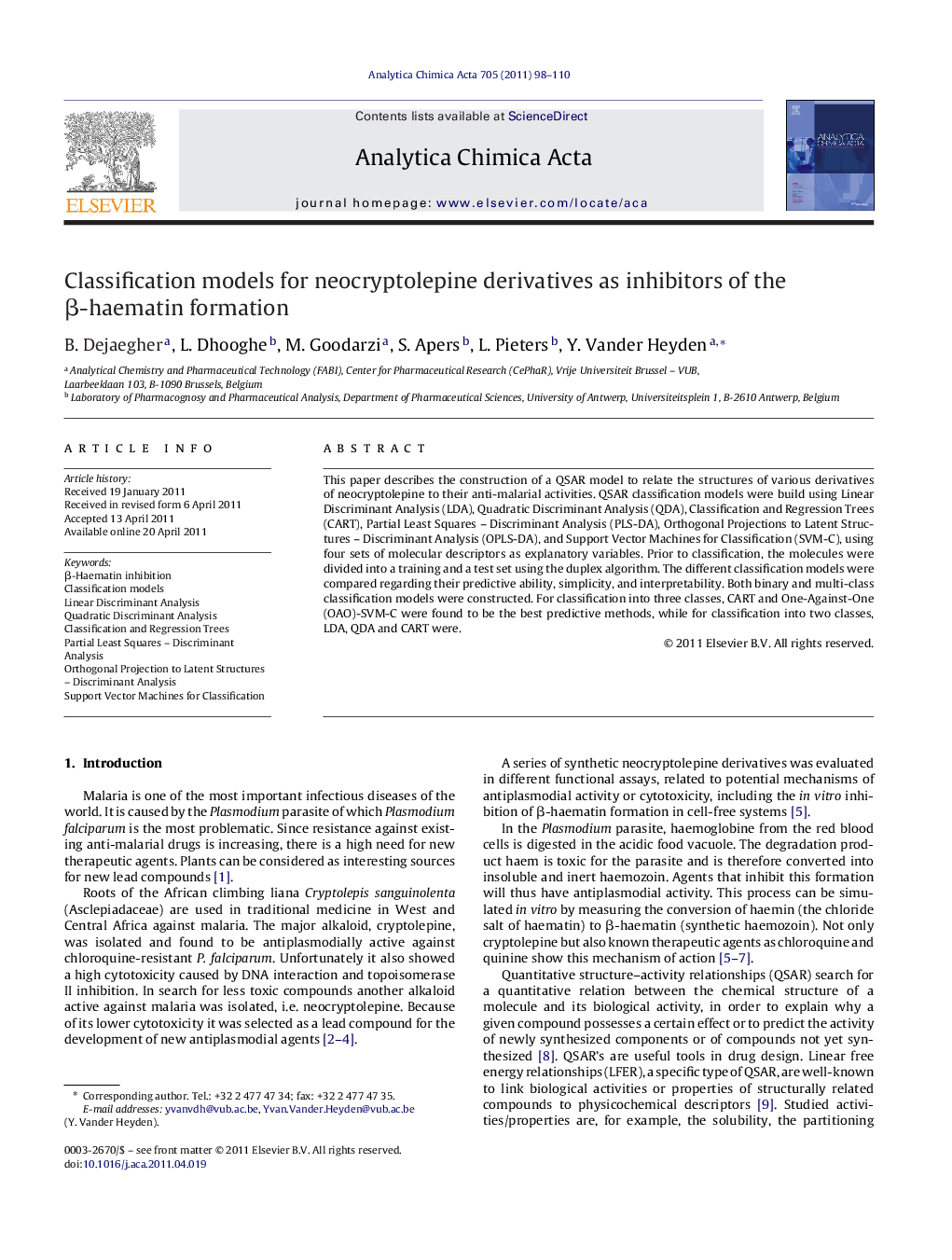| Article ID | Journal | Published Year | Pages | File Type |
|---|---|---|---|---|
| 1166679 | Analytica Chimica Acta | 2011 | 13 Pages |
This paper describes the construction of a QSAR model to relate the structures of various derivatives of neocryptolepine to their anti-malarial activities. QSAR classification models were build using Linear Discriminant Analysis (LDA), Quadratic Discriminant Analysis (QDA), Classification and Regression Trees (CART), Partial Least Squares – Discriminant Analysis (PLS-DA), Orthogonal Projections to Latent Structures – Discriminant Analysis (OPLS-DA), and Support Vector Machines for Classification (SVM-C), using four sets of molecular descriptors as explanatory variables. Prior to classification, the molecules were divided into a training and a test set using the duplex algorithm. The different classification models were compared regarding their predictive ability, simplicity, and interpretability. Both binary and multi-class classification models were constructed. For classification into three classes, CART and One-Against-One (OAO)-SVM-C were found to be the best predictive methods, while for classification into two classes, LDA, QDA and CART were.
Graphical abstractFigure optionsDownload full-size imageDownload as PowerPoint slideHighlights► Classification of various neocryptolepine derivatives according to their anti-malarial activity. ► Use of LDA, QDA, CART, PLS-DA, OPLS-DA, OAO-SVM-C, and OAA-SVM-C for classification. ► CART model preferred for three-class classification according to activity. ► LDA and QDA models preferred for two-class classification according to activity.
